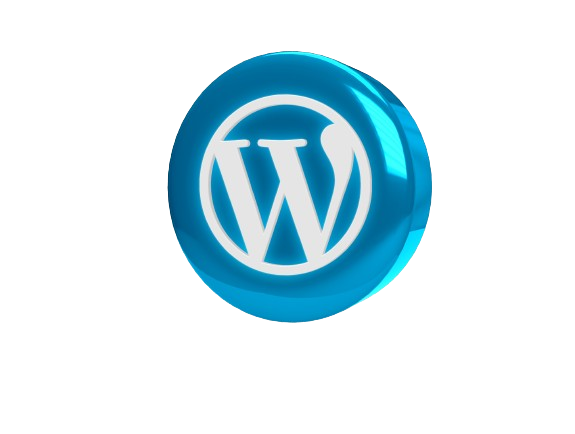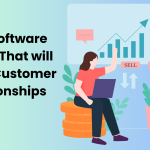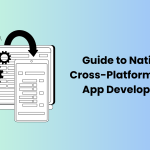In a world of innovation where everything is swiftly evolving, you want a website for your business that is different, dynamic and aesthetically-pleasing. Well, that’s completely justified since you want a tailor-made experience to stand out from the crowd. It’s kinda cool though!

Choosing WordPress to build your custom website is an ideal option for entrepreneurs, startup-founders and small businesses alike. With WordPress powering over 40% of the web, the platform remains a powerful force as we approach 2024. It is very customizable, affordable, and easy to use. So whenever you are in a spot to choose a great, custom platform for your web development, WordPress is the best one to go for!
This comprehensive guide will explain “what is custom WordPress development, why you should not select a pre-built WordPress theme, and how to begin with it”. We’ll walk you through the process of developing a custom WordPress website in 2024, combining the latest trends, best practices, and advanced techniques to ensure your site stands out in the digital crowd.
Let’s dive right away!
What Does Custom WordPress Development Mean?
Custom websites are the need of many businesses. Custom WordPress development is the process of creating a unique WordPress website from the ground up or tweaking an already-existing one as per custom requirements. It entails developing unique features, plugins, designs, UX / Ui elements and themes. Custom websites cater to the specific needs of the organization so that it doesn’t have to look for any other bespoke options for its users.
Businesses who want a distinctive look to set them apart from the competition may find that custom WordPress development is a smart option. Nevertheless, it often calls for expert WordPress developers, and therefore it may not be an affordable option as that of utilizing pre-made themes and plugins.
In recent years, the term “low-code” has become a growing trend. Software known as low-code platforms enables coders to build apps with little to no manual coding. Rather than relying heavily on human coding, they employ visual interfaces with basic logic and drag-and-drop capabilities. Consider WordPress to be a low-code platform, especially when utilizing builders such as Divi, Elementor, and other such tools. Developers and non-developers alike may construct and modify websites with these builders’ intuitive interfaces.
Why You Should Not Select a Pre-Built WordPress Theme
From the face value, pre-built WordPress themes look economical and easy to get started with. But, they have many pitfalls deep down. Here we have jotted down some of the serious concerns with pre-existing themes and why you shouldn’t use them:
- Pre-built themes lead us to slow speed websites
- Most of the already made themes from the WordPress store are filled with major SEO flaws
- Website security is a big red flag in purchased WordPress themes
- They do not appeal bespoke needs and unique objectives
- There can be hidden costs to buy plugins
- Pre-made themes often lack consistent website support for updates
Key Points to Developing a Custom WordPress Website in 2024
When starting this adventure, it is essential to comprehend the process of building a custom WordPress website. There is more to this procedure than just setting up WordPress and a pre-made theme. Rather, it is a sequence of technical and strategic actions, starting with the first stages of design and planning and ending with the launch.
Every phase is essential to ensure that the final product fulfills your unique objectives and looks excellent in addition to performing properly. Let’s take a closer look at each of these processes so you can have a full grasp of what it takes to build a custom WordPress website.
Step 1: Establish Your Objectives
Setting out the objectives and purpose of your website is essential before you get too technical. Your project’s goals and objectives serve as a guidance.
They provide an overview of your website’s goals. Your development team will be better able to comprehend your vision and produce a product that lives up to your expectations if these are well defined.
You need to write down everything: either on a digital diary or on a paper. What are your business goals? Which features and functions are essential to you? These inquiries will direct the entire process of growth and assist you in reaching well-informed conclusions.
Step 2: Choose a Solid Hosting Provider
Selecting the right hosting provider is a crucial decision that can significantly impact your website’s performance. In 2024, opt for a hosting provider that offers high-speed servers, excellent customer support, and the latest security measures. Popular choices include Bluehost, SiteGround, and Kinsta.
Step 3: Carefully Select a Starter Theme (Base Theme)
When making your own WordPress theme, selecting a suitable foundation theme is an essential step in the process. A beginning theme makes modification easy and offers a strong base upon which to expand. It also streamlines the development process. using templates for frequently used objects, improved accessibility, and mobile navigation capabilities, a starting theme—whether built using Underscores, UnderStrap, or Bones—can help you get started quickly on developing a custom theme.
Choosing a beginning theme that suits your requirements and preferences frees up your time to concentrate on creating a unique WordPress theme that accurately expresses your ideas.
Step 4: Install WordPress and Essential Plugins
After securing a hosting provider, install WordPress on your server. Most hosting platforms offer a one-click installation process. Once WordPress is set up, install essential plugins to enhance functionality and security. Consider plugins for SEO (Yoast SEO), caching (W3 Total Cache), and security.
Step 5: Choose a Customizable Theme
Selecting a visually appealing and customizable theme is essential for creating a unique website. In 2024, choose a theme that is responsive, SEO-friendly, and easily customizable. Consider popular theme frameworks like Divi, Astra, or GeneratePress, which provide a solid foundation for customization.
Step 6: Customize Your Theme
Customizing your chosen theme is where your website truly takes shape. Leverage the WordPress Customizer to modify colors, fonts, layouts, and other design elements. For more advanced customization, consider using a child theme to preserve your changes during theme updates.
Step 7: Develop Custom Page Templates
To achieve a truly custom look and feel, develop custom page templates for specific sections of your website. This might include unique templates for your homepage, blog, portfolio, or any other distinctive sections. Use a combination of HTML, CSS, and PHP to tailor these templates to your specific needs.
Step 8: Incorporate Advanced Functionality with Custom Plugins
If your website requires unique functionalities beyond what standard plugins offer, consider developing custom plugins. This step involves PHP coding and possibly integrating with third-party APIs. Hire an experienced developer or take advantage of online resources to learn the necessary skills.
Step 9: Optimize for Performance
In 2024, website speed is a critical factor for user experience and search engine rankings. Optimize your website’s performance by compressing images, utilizing browser caching, and minimizing server requests. Consider implementing lazy loading for images and using Content Delivery Networks (CDNs) for faster loading times globally.
Step 10: Implement SEO Best Practices
Ensure your website is search engine friendly by implementing SEO best practices. Use descriptive titles and meta descriptions, create a sitemap, and optimize your content for relevant keywords. The Yoast SEO plugin can be instrumental in guiding you through these optimization steps.
Step 11: Test and Debug
Thoroughly test your website across different browsers and devices to ensure a seamless user experience. Debug any issues that arise during testing, paying attention to responsiveness, functionality, and overall performance.
Testing is an essential phase in the creation of a custom WordPress website. It entails making sure that every feature functions as intended, confirming that the website shows appropriately in all browsers and on all devices, and assessing the security and speed of the website.
The goal is to find and address any problems prior to the website being live in order to guarantee a seamless and ideal user experience.
Step 12: Secure Your Website
In the age of cyber threats, security is paramount. Utilize a robust security plugin, keep your themes and plugins updated, and regularly back up your website. Implementing SSL encryption is also essential to secure data transmission between your server and users.
Step 13: Launch and Maintain
The process of launching a unique WordPress website is the last stage. Final testing and review, moving the website to the live server, making sure SEO best practices have been followed, configuring analytics, and putting backup and security measures in place are all part of it.
It’s time to use your selected marketing channels to publicize the site’s debut once it’s online and operational.
Technical Aspects
A WordPress plugin should consider or be developed with a number of technical considerations, including:

Compatibility:
The plugin should be compatible with WordPress versions as recent as possible. Moreover, it shouldn’t interfere with other themes or plugins. Make sure a plugin is compatible before installing it.
Updates & Maintenance:
Search for plugins that the creators update and maintain on a regular basis. Frequent updates often indicate that the plugin is being actively developed and that security flaws are being quickly fixed.
Security:
If a plugin is not properly built or maintained, there may be a danger to its security. Make sure the plugins you use adhere to security best practises by only using those from reliable sources.
Performance:
If a plugin is not coded correctly, it may cause your website to load more slowly. Prior to installing a plugin, make sure you read reviews and user comments on its functionality.
Support:
Select plugins with high-quality support. This can come from the creators themselves, through forums, documentation, or direct assistance.
Uninstallation:
If you decide to uninstall a decent plugin, it should remove all of its settings and data from your website without causing any damage. This makes sure that even after you’ve tried and deleted many plugins, your website stays clear and functional. By taking these factors into account, you can be sure that the plugins you design or utilize will enhance your website rather than cause problems or hassles later on.
Concluding Remarks
You’ll be well-prepared to create a custom WordPress website in 2024 if you adhere to this thorough guidance, which not only fits your demands now but also evolves with the web building industry. To maintain your website at the forefront of digital innovation, keep up with the most recent WordPress trends and technology.
In the ever-evolving digital world, having a website that stands out is imperative. Your website could stand out because of the custom WordPress development’s flexibility, scalability, and uniqueness. With its customizable features, you can ensure that your website not only looks great but also satisfies all of your personal and business needs.
Whether you’re an aspiring startup, an existing business looking to refresh your online presence, or an entrepreneur with a fresh vision, custom WordPress development could provide the solutions you need. It all comes down to building a genuinely authentic online presence for yourself, one whose functionality and style speak to your target market and represent your business.





